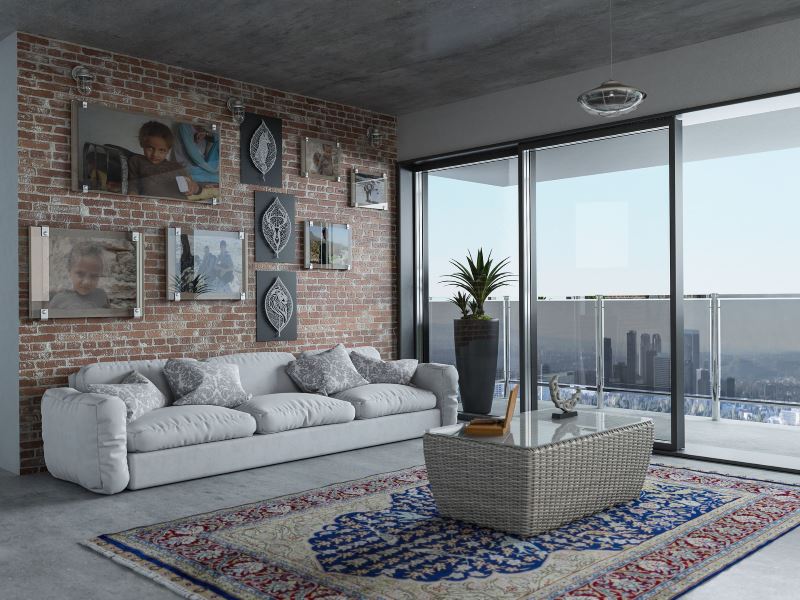Interior decorating trends, Colour schemes, Interior decorating
Decorating in Transitional Style: The Ultimate Guide
Interior design is one of the few fields where you can have your cake and eat it, too. Providing you with an opportunity to express your creativity in an authentic way, transitional interior style enables you to combine both modern and traditional elements into an enchanting look. So, if you’re a fan of all things modern and vintage, transitional design is the perfect midpoint where you can gather the best of both worlds.
Go with a subtle colour scheme

Homes that feature transitional design exude elegance and serenity owing to their subtle, but sophisticated colour palettes. Opting for a neutral colour scheme will enable you to create a chic backdrop against which your furniture and accent details will truly stand out. Warm, understated neutrals, such as cream, taupe, khaki, tan, grey and off-white, will create an open, inviting ambience where subtle elegance dominates the space. Occasional pops of dark shades, such as chocolate brown, or surprising hues, for example, bright turquoise or saturated coral, will add character to your transitional design and accentuate the details.
Keep it simple and elegant

Minimalism is one of the most important features of transitional design, especially when it comes to decorations. A few carefully picked and strategically placed accent details can really elevate your home décor without creating an overbearing look. To truly capture both modern and traditional essence of transitional style, you can combine eclectic or exotic accessories with romantic, vintage details. You can decorate your living room with geometrically-inspired modern lamps and a beautiful vintage mirror. Asian-inspired room dividers can also be lovely accent details that will stand out perfectly against a subtle backdrop.
Embellish the walls

Since transitional style embraces simplicity, elegance and a monochromatic design, it provides plenty of opportunities for creative embellishments, especially when it comes to the walls. A single accent wall decorated with stunning wallpaper can truly make a statement and break up the monotony in a subtle yet stylish way. An enchanting wallpapered statement wall even in a neutral hue can add interest to a room owing to its textured appeal or patterned design.
Impactful artwork is another chic way to embellish your neutral walls. While a combination of lovely paintings and photographs can help you create a mesmerising gallery wall, a single large piece will stand out on an otherwise plain wall. However, since the transitional style accentuates minimalism, going for a single work of art will have a much greater impact than a gallery. And since this style combines contemporary and traditional style, you have plenty of options when it comes to the motifs and themes featured in paintings.
Mix up the furniture

In transitional design, furniture represents a lovely mixture of both traditional and modern features. In some countries, such as Australia, homeowners love to add character to their transitional design by introducing an authentic detail that works as a stunning décor statement in a subtle setting. An enticing combination of both contemporary and traditional pieces is an epitome of the transitional style. You can even find pieces that reflect both styles and can be used as the focal point in a transitional place. For example, trendy and elegant egg chairs from Australia are a perfect choice for transitional homes. These chairs feature a comfortable contemporary design without excessive ornamentation, which enables the elegant form to come into focus. For example, an ivory white Arne Jacobsen egg chair has a modern look with a slightly romantic appeal that will truly elevate your transitional home décor.
Add texture with materials

The simplicity of transitional design provides you with an opportunity to mix things up when it comes to materials. As one of the most common choices, wood in a light colour can set the tone of traditional elegance while glass and metal will give your space a modern flair. However, the key lies in using metal and glass for stunning details rather than furniture.
As for fabrics, they are used to create an interesting, textured look. You should embrace materials, such as ultrasuede, chenilles and corduroys for visual interest. Distressed leather is a popular choice for transitional furniture since it creates a comfortable, elegant effect. You should still opt for neutral colours, such as creamy whites, tans, beiges and olives, because texture is what gives these materials a beautiful appeal.
If you’re a design enthusiast who cannot resist the allure of both traditional and contemporary styles, transitional design will enable you to combine them both in an authentically cohesive look.
About the author
Chloe Smith is a business consultant for a Sydney based junk removal company Pink Junk, and a part-time writer always willing to share tidbits of advice. She believes that passion, courage and, above all, knowledge breed success. When she’s not working, she’s probably somewhere cuddled up with a good book, and a cup of lemongrass tea (or more honestly binge-watching the newest Netflix hit show).


Hey Chloe, Brilliant interior designing ideas… You have covered both modern and traditional interior design aspects. I will surely try these ideas. Thanks for posting…keep posting.